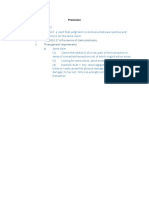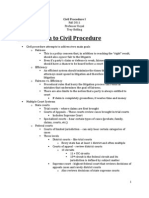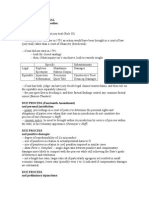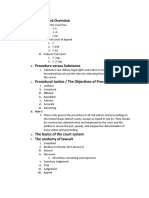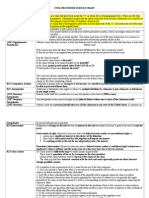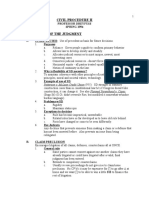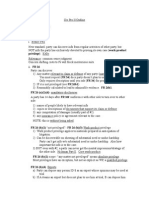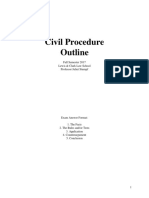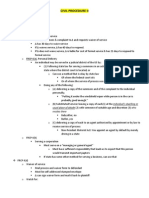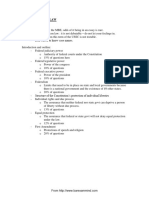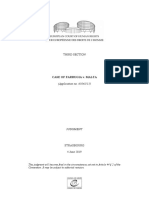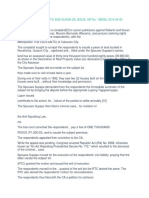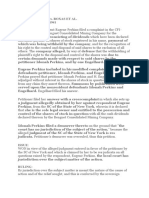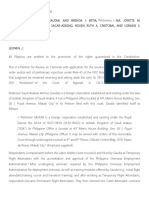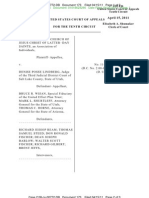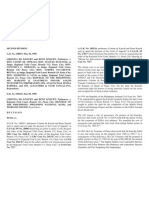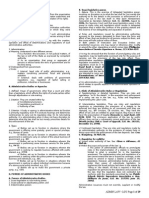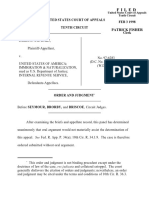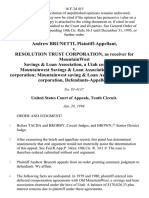0% found this document useful (0 votes)
29 views4 pagesCivil Procedure Deep Dive
The document outlines the standards of review on appeal, including the de novo review for questions of law, the 'clearly erroneous' standard for factual determinations in bench trials, and the deferential standard for jury findings. It also discusses claim and issue preclusion, detailing the requirements for both, including the necessity of a valid final judgment and the same parties involved. Additionally, it explains the fairness factors for nonmutual issue preclusion and the implications of compulsory counterclaims.
Uploaded by
inesayadi1305Copyright
© © All Rights Reserved
We take content rights seriously. If you suspect this is your content, claim it here.
Available Formats
Download as PDF, TXT or read online on Scribd
0% found this document useful (0 votes)
29 views4 pagesCivil Procedure Deep Dive
The document outlines the standards of review on appeal, including the de novo review for questions of law, the 'clearly erroneous' standard for factual determinations in bench trials, and the deferential standard for jury findings. It also discusses claim and issue preclusion, detailing the requirements for both, including the necessity of a valid final judgment and the same parties involved. Additionally, it explains the fairness factors for nonmutual issue preclusion and the implications of compulsory counterclaims.
Uploaded by
inesayadi1305Copyright
© © All Rights Reserved
We take content rights seriously. If you suspect this is your content, claim it here.
Available Formats
Download as PDF, TXT or read online on Scribd
/ 4



